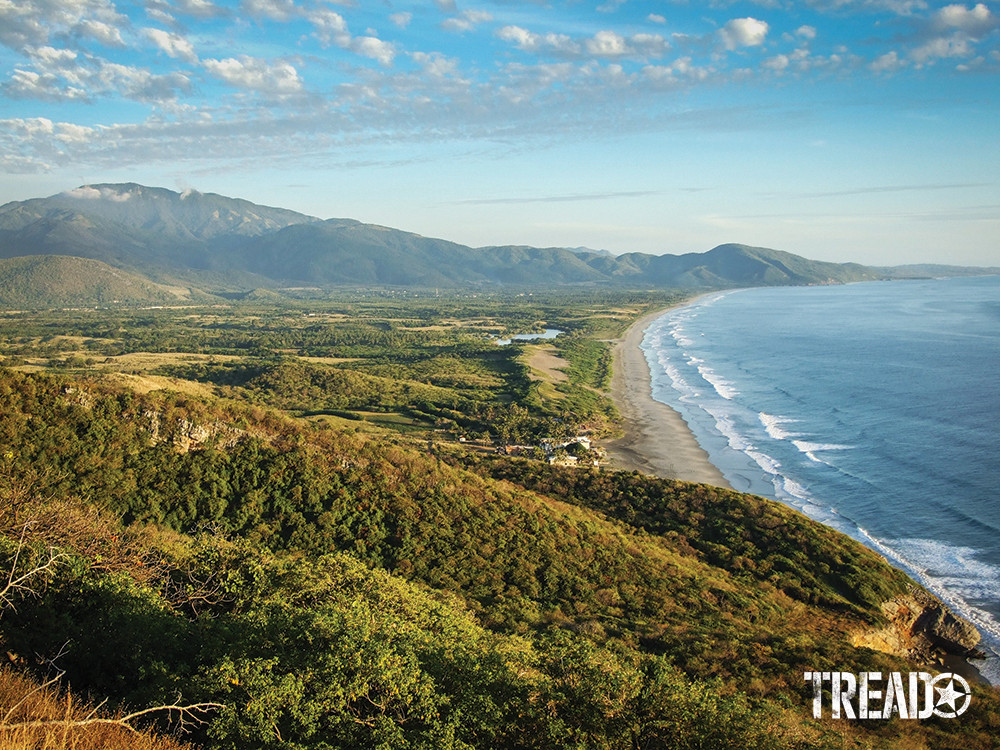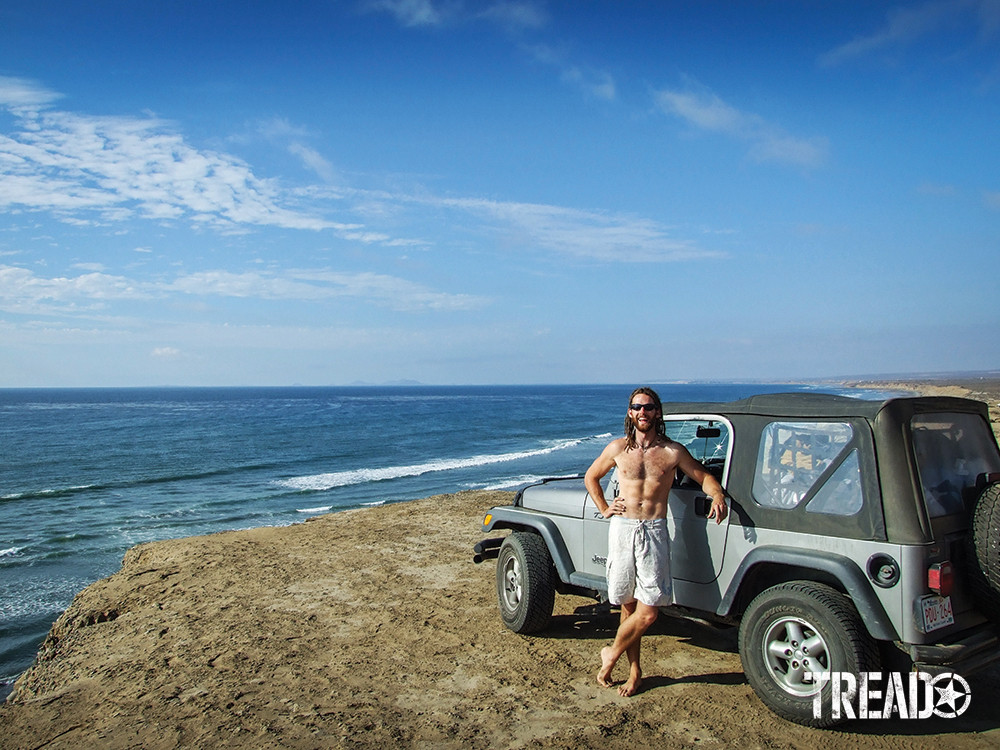Embarking on a road trip from Mexico to South America is a thrilling prospect for any traveler, and at gaymexico.net, we understand the unique considerations LGBTQ+ individuals have when planning such an adventure. The answer is yes, you can drive from Mexico to South America, but it’s not a simple task, and this article will provide a roadmap for navigating this epic journey safely and enjoyably.
Are you dreaming of an unforgettable road trip, cruising from the vibrant streets of Mexico to the stunning landscapes of South America? Navigating the Pan-American Highway is a monumental feat, but it’s absolutely achievable with careful planning and a spirit for adventure, especially for the LGBTQ+ community! Let gaymexico.net be your ultimate guide as we explore this epic journey, revealing key routes, safety tips, and must-see destinations that will make your drive unforgettable.
1. What Is the Pan-American Highway, And Can You Drive It From Mexico to South America?
Yes, you can drive from Mexico to South America via the Pan-American Highway, an extensive road network that links much of the American continents. The Pan-American Highway is a network of roads that runs through the majority of countries in the Americas, and it stretches approximately 19,000 miles (30,000 km) from Prudhoe Bay, Alaska, to Ushuaia, Argentina, making it the world’s longest “motorable” road. Although not a single continuous highway, the Pan-American Highway connects almost all mainland nations in the Americas. Keep reading to understand why the trip is not for the faint of heart.
The allure of the Pan-American Highway lies not only in its impressive length but also in its promise of adventure and cultural immersion. Originally conceived in the 1920s and formalized in 1937 with the Convention of the Pan-American Highway, this route was designed to foster tourism, trade, and camaraderie across nations, with each country committed to developing their segments. Despite this grand vision, the highway isn’t without its challenges, particularly the infamous Darien Gap.
2. What Are the Challenges of Driving from Mexico to South America via the Pan-American Highway?
Driving the Pan-American Highway from Mexico to South America presents several challenges, and the most significant barrier is the Darien Gap, a dense jungle region between Panama and Colombia, and the only break in the Pan-American Highway. The Darien Gap is about 60 miles (97 km) long, and there are no roads through the Darien Gap due to its dense rainforests, swamps, and rivers.
This undeveloped stretch, about 60 miles long, is virtually impassable by vehicle due to dense rainforests, swamps, and the absence of roads.
For LGBTQ+ travelers, safety considerations also come into play. While many parts of Mexico and South America are welcoming, attitudes can vary significantly, making it essential to research and plan accordingly.
2.1. The Darien Gap:
The main obstacle is the Darien Gap between Panama and Colombia, a roadless, jungle-filled area. Since you cannot drive through it, you need to find alternative ways to bypass it, like shipping your car and flying over it.
You have two choices:
-
Shipping Your Vehicle: You can ship your vehicle from a port in Panama to a port in Colombia.
-
Flying Over: The more practical way, in which you would fly over the Darien Gap.
2.2. Safety and Security Concerns:
Some areas along the route may have safety concerns due to crime or political instability, especially border regions. According to Human Rights Watch, violence, including killings and kidnappings, has increased in the Colombia-Venezuela border region.
2.3. Border Crossings:
Navigating border crossings can be complex, requiring specific documentation for both you and your vehicle.
2.4. Varying Road Conditions:
Road conditions can vary significantly, from well-maintained highways to rugged, unpaved roads.
2.5. Cultural and Language Barriers:
Communication can be challenging in some areas if you don’t speak Spanish or Portuguese.
2.6. LGBTQ+ Specific Safety:
While many areas are welcoming, some regions may have less tolerant attitudes towards LGBTQ+ individuals. Researching ahead and being aware of local customs is essential.
 Beach with blue ocean water.
Beach with blue ocean water.
3. What Are the Best Routes for Driving from Mexico to South America?
Planning your route is key, and there are a few popular options you can use for the trip from Mexico to South America, once you circumvent the Darien Gap:
3.1. The Pacific Coast Route:
Drive south through Mexico, Central America, and then along the Pacific coast of South America.
This route offers stunning scenery and access to major cities.
3.2. The Andean Route:
A more challenging but equally rewarding route through the Andes Mountains.
Offers breathtaking mountain views and cultural experiences.
3.3. The Eastern Route:
Via Brazil and Argentina, this route provides a different perspective on South America.
Explore the Amazon rainforest and vibrant cities like Rio de Janeiro and Buenos Aires.
4. What Should LGBTQ+ Travelers Know About Safety on this Trip?
Safety is a top priority, especially for LGBTQ+ travelers. While many areas are safe and welcoming, it’s crucial to be aware of local attitudes and laws.
4.1. Research Destinations:
Use resources like Equaldex and local LGBTQ+ organizations to understand the legal and social climate in each country.
4.2. Stay Informed:
Keep up-to-date with local news and travel advisories.
4.3. Trust Your Instincts:
If a situation feels unsafe, remove yourself from it.
4.4. Connect with Local LGBTQ+ Communities:
Reach out to local LGBTQ+ groups for advice and support.
4.5. Be Discreet When Necessary:
In more conservative areas, it may be wise to avoid public displays of affection.
5. What Preparations Are Essential Before Embarking on the Journey?
Proper preparation can make all the difference, so here are some key steps to consider before driving from Mexico to South America:
5.1. Vehicle Preparation:
Ensure your vehicle is in top condition, with new tires, a reliable engine, and a well-stocked toolkit. According to Dan Grec, who drove from Alaska to Argentina, a reliable vehicle is one of the keys to a successful trip.
5.2. Documentation:
Gather all necessary documents, including passports, visas, driver’s licenses, vehicle registration, and insurance.
5.3. Budgeting:
Plan your budget carefully, accounting for fuel, tolls, accommodation, food, and unexpected expenses.
5.4. Language Skills:
Learning basic Spanish or Portuguese can significantly enhance your travel experience.
5.5. Emergency Preparedness:
Carry a first-aid kit, a satellite phone, and emergency supplies.
5.6. Cultural Awareness:
Research the customs and etiquette of each country you plan to visit.
 Man and silver jeep next to ocean.
Man and silver jeep next to ocean.
6. What Are Some Must-See Destinations Along the Way?
The journey from Mexico to South America is filled with incredible destinations, and here are a few highlights:
6.1. Mexico:
Explore ancient ruins, vibrant cities, and beautiful beaches. Mexico is where you can dive into the ancient Mayan civilizations, explore the colorful streets of Oaxaca, or relax on the idyllic beaches of Tulum. Don’t miss Mexico City’s thriving LGBTQ+ scene, with its numerous gay bars, clubs, and cultural events.
6.2. Guatemala:
Hike volcanoes, visit Mayan ruins, and experience the rich indigenous culture.
6.3. Costa Rica:
Enjoy rainforests, wildlife, and adventure activities. For LGBTQ+ travelers, Costa Rica is known for its progressive attitudes and beautiful landscapes.
6.4. Colombia:
Discover vibrant cities like Medellin and Cartagena, and explore coffee plantations and rainforests. Check out the gay-friendly neighborhoods in Medellin, such as El Poblado, which offer a welcoming atmosphere for LGBTQ+ travelers.
6.5. Ecuador:
Visit the Galapagos Islands, explore the Amazon rainforest, and hike in the Andes. Quito, the capital, has a growing LGBTQ+ scene, with several gay bars and clubs.
6.6. Peru:
Explore Machu Picchu, hike the Inca Trail, and experience the ancient culture.
6.7. Bolivia:
Visit the Salar de Uyuni, explore the Andes, and experience the unique culture.
6.8. Chile:
Explore the Atacama Desert, visit Patagonia, and enjoy the vibrant cities.
6.9. Argentina:
Experience Buenos Aires, visit Iguazu Falls, and explore Patagonia. Buenos Aires is known as one of the most gay-friendly cities in South America, offering a vibrant LGBTQ+ nightlife and culture.
7. What Kind of Documentation Is Needed for This Trip?
To ensure smooth border crossings, you’ll need to gather several essential documents:
7.1. Passport:
A valid passport with at least six months of validity beyond your intended stay.
7.2. Visas:
Check the visa requirements for each country you plan to visit. Some countries may offer visa-free entry for certain nationalities.
7.3. Driver’s License:
A valid driver’s license from your home country. An International Driving Permit (IDP) is also recommended.
7.4. Vehicle Registration:
Original vehicle registration documents.
7.5. Vehicle Insurance:
Check the insurance requirements for each country. You may need to purchase local insurance in some cases.
7.6. Temporary Import Permit:
A Temporary Import Permit (TIP) is required for your vehicle in many countries.
7.7. Copies of Important Documents:
Keep copies of all important documents in a separate location from the originals.
8. How Can You Prepare Your Vehicle for Such a Long Trip?
Preparing your vehicle is crucial for a safe and enjoyable journey. Follow these steps to ensure your vehicle is up to the challenge:
8.1. Comprehensive Inspection:
Have a mechanic perform a thorough inspection of your vehicle, checking the engine, brakes, suspension, and tires.
8.2. New Tires:
Install new, high-quality tires suitable for a variety of road conditions.
8.3. Spare Parts:
Carry essential spare parts, such as belts, hoses, fuses, and light bulbs.
8.4. Toolkit:
Assemble a comprehensive toolkit with essential tools for basic repairs.
8.5. Fluids:
Check and top off all fluids, including engine oil, coolant, brake fluid, and power steering fluid.
8.6. Suspension:
Upgrade your vehicle’s suspension if necessary, especially if you plan to travel on rough roads.
8.7. Fuel Capacity:
Consider installing extra fuel tanks for longer stretches between gas stations.
8.8. Protection:
Install skid plates and brush guards to protect your vehicle from damage.
8.9. Recovery Gear:
Carry recovery gear, such as a winch, tow straps, and a shovel, in case you get stuck.
8.10. Organization:
Organize your gear efficiently to maximize space and accessibility.
9. What Are Some Useful Tips for Driving in Mexico and Central America?
Driving in Mexico and Central America can be challenging, so here are some useful tips:
9.1. Drive During Daylight Hours:
Avoid driving at night, as roads can be poorly lit and more dangerous.
9.2. Be Aware of Road Hazards:
Watch out for potholes, speed bumps (topes), and animals on the road.
9.3. Use Toll Roads:
Toll roads (cuotas) are generally safer and better maintained than free roads (libres).
9.4. Fill Up Your Gas Tank:
Gas stations can be scarce in some areas, so fill up whenever you have the chance.
9.5. Be Cautious at Police Checkpoints:
Police checkpoints are common, so be polite and respectful. Have your documents ready.
9.6. Avoid Displaying Wealth:
Avoid wearing expensive jewelry or flashing large amounts of cash.
9.7. Park in Secure Locations:
Park your vehicle in well-lit, secure locations whenever possible.
9.8. Trust Your Instincts:
If a situation feels unsafe, leave immediately.
10. How Can You Stay Connected During the Trip?
Staying connected is essential for safety and communication. Consider these options:
10.1. Local SIM Cards:
Purchase local SIM cards for each country you visit. This is often the most cost-effective option.
10.2. International Roaming:
Check with your mobile carrier about international roaming plans.
10.3. Satellite Phone:
A satellite phone can be a lifesaver in remote areas with no cell service.
10.4. Wi-Fi Hotspots:
Take advantage of Wi-Fi hotspots in hotels, cafes, and restaurants.
10.5. Offline Maps:
Download offline maps for navigation in areas with limited internet access.
11. What Are the Best Ways to Learn Spanish for the Trip?
Learning Spanish can significantly enhance your travel experience. Here are some effective methods:
11.1. Language Learning Apps:
Use language learning apps like Duolingo, Babbel, or Rosetta Stone.
11.2. Online Courses:
Enroll in online Spanish courses through platforms like Coursera or Udemy.
11.3. Language Exchange Partners:
Find language exchange partners through websites like HelloTalk or Tandem.
11.4. Immersion Programs:
Consider enrolling in a Spanish immersion program in Mexico or Central America.
11.5. Phrasebooks and Dictionaries:
Carry a Spanish phrasebook and dictionary for quick reference.
12. What Are Some Resources for LGBTQ+ Travelers in Mexico and South America?
Finding reliable resources is crucial for LGBTQ+ travelers. Here are some helpful websites and organizations:
12.1. Equaldex:
A crowdsourced knowledge base that maps the legal and social situation of LGBTQ+ people.
12.2. ILGA World:
The International Lesbian, Gay, Bisexual, Trans and Intersex Association provides information and resources on LGBTQ+ rights worldwide.
12.3. Local LGBTQ+ Organizations:
Research local LGBTQ+ organizations in each country you plan to visit.
12.4. Gay Mexico (gaymexico.net):
Your go-to resource for LGBTQ+ travel in Mexico, offering guides, event listings, and community connections.
12.5. Travel Blogs and Forums:
Explore travel blogs and forums dedicated to LGBTQ+ travel for first-hand advice and recommendations.
Driving from Mexico to South America is an ambitious journey filled with challenges and rewards. By planning carefully, preparing thoroughly, and staying informed, you can embark on this epic adventure with confidence. Remember to prioritize safety, respect local cultures, and embrace the unexpected. For LGBTQ+ travelers, extra vigilance and research are essential, but the opportunity to explore these diverse and beautiful countries is well worth the effort.
Embarking on a journey from Mexico to South America is an adventure of a lifetime, brimming with diverse cultures, breathtaking landscapes, and unforgettable experiences. At gaymexico.net, we’re dedicated to providing you with the resources and information you need to explore Mexico and beyond safely and authentically.
Address: 3255 Wilshire Blvd, Los Angeles, CA 90010, United States
Phone: +1 (213) 380-2177
Website: gaymexico.net.
Frequently Asked Questions (FAQs)
Can you drive from Mexico to South America?
Yes, driving from Mexico to South America is possible, although challenging. The main obstacle is the Darien Gap between Panama and Colombia, which is impassable by vehicle. You’ll need to ship your vehicle around this section and fly over.
What is the Pan-American Highway?
The Pan-American Highway is a network of roads that spans most of the Americas, from Alaska to Argentina. It is the world’s longest “motorable” road but isn’t a continuous highway.
What documents are needed for driving from Mexico to South America?
You’ll need a valid passport, visas (if required), a driver’s license, vehicle registration, vehicle insurance, and a Temporary Import Permit (TIP) for your vehicle.
How should I prepare my vehicle for the trip?
Have a mechanic perform a thorough inspection, install new tires, carry essential spare parts and tools, check and top off all fluids, and consider upgrading the suspension.
Is it safe for LGBTQ+ travelers to drive from Mexico to South America?
Safety varies by region. Research destinations, stay informed, connect with local LGBTQ+ communities, and be discreet when necessary.
What are some tips for driving in Mexico and Central America?
Drive during daylight hours, be aware of road hazards, use toll roads when possible, fill up your gas tank frequently, be cautious at police checkpoints, and avoid displaying wealth.
How can I learn Spanish for the trip?
Use language learning apps, enroll in online courses, find language exchange partners, or consider immersion programs.
What are some must-see destinations along the way?
Destinations include Mexico City, Guatemala, Costa Rica, Medellin, Quito, Machu Picchu, Salar de Uyuni, Atacama Desert, and Buenos Aires.
How can I stay connected during the trip?
Use local SIM cards, international roaming plans, satellite phones, Wi-Fi hotspots, and offline maps.
Where can I find resources for LGBTQ+ travelers in Mexico and South America?
Resources include Equaldex, ILGA World, local LGBTQ+ organizations, travel blogs and forums, and Gay Mexico (gaymexico.net).
